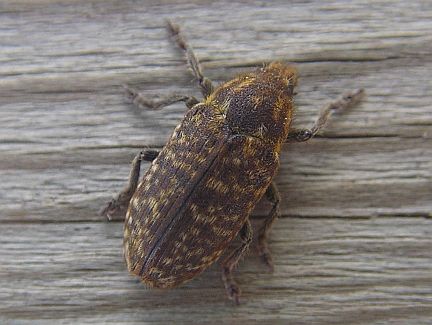|
Common Name: Thistle Head Weevil, Seed-head Weevil Latin Name:
Rhinocyllus conicus (Frölich, 1792)
(R. Bercha, det.)
Length: 3 to 7 mm
Range: Alberta
Habitat:
Near Thistle
Time of year seen: May
to August
Diet: Musk Thistle and Plumeless Thistle
Other: This species is native to Europe and was
imported to Canada in 1968 for biological control of Thistles. Its
main host is
Musk or Nodding Thistle, however it will also attack Plumeless
Thistle. Each female lays from 100 to 200 eggs on the bracts of
thistle heads. The eggs hatch in 6 to 9 days with newly hatched larvae
feeding through the bracts into the receptacle. The larvae feed on the
receptacle and the young seeds, preventing or reducing the production of
viable seeds. There are a total of four larval growth stages which
last from 4 to 6 weeks. Pupation occurs in a black oval cell within the
thistle head, and requires an additional 7 to 10 days. The adults emerge
from the seed heads from July to August. They remain inactive and then
hibernate through winter. The following spring the adults emerge from their
winter refuge to lay eggs on new developing buds. There is only one adult
generation each year. ( Boldt, P. E., 1985) |
